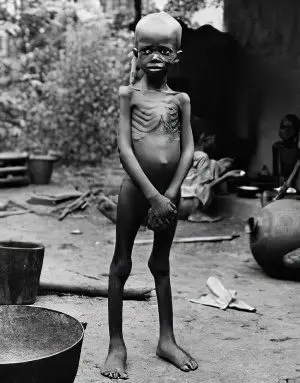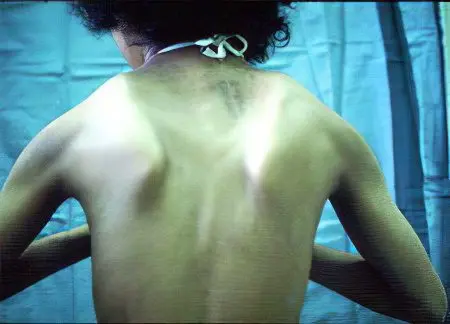Contents
What is dystrophy?
Dystrophy – a pathological process leading to the loss or accumulation by tissues of substances that are not characteristic of it in the normal state (for example, the accumulation of coal in the lungs). With dystrophy, the cells and the intercellular substance are damaged, as a result of which the functioning of the diseased organ is also disrupted. A complex of mechanisms – trophism – is responsible for the metabolism and preservation of the cell structure. It is she who suffers from dystrophy: the self-regulation of cells and the transport of metabolic products are disrupted.
Dystrophy most often affects children under three years of age, which leads to a delay in physical, intellectual and psychomotor development, disorders of the immune system and metabolism.
Types of dystrophy

There are several classifications of dystrophy. Depending on the type of metabolic disorders, it is divided into protein, fat, carbohydrate and mineral dystrophy. By localization, dystrophy is cellular, extracellular and mixed. Acquired and congenital dystrophy can be by etiology (origin). Congenital dystrophy is always genetically determined: metabolic disorders of proteins, carbohydrates and fats are hereditary. One or another enzyme involved in metabolism may be absent, which leads to incomplete breakdown and accumulation of metabolic products in the tissues. Different tissues are affected, but the central nervous system always suffers, which leads to a deficiency of certain enzymes. These are very dangerous diseases, as a deficiency of certain enzymes can cause death.
Also, dystrophy is divided into three types: hypotrophy, hypostature and paratrophy.
Hypotrophy is the most common form of the disease today. It is expressed in insufficient body weight of a person in relation to his height and can be prenatal (congenital), postnatal (acquired) and mixed.
Paratrophy is a violation of nutrition and metabolism, expressed as an excess of body weight.
Hypostature – the same lack of weight and height in accordance with age norms.
When dystrophy develops as a result of protein-energy deficiency, it is called primary, if it accompanies another disease – secondary.
Causes of dystrophy
Dystrophy can be due to many different reasons. In addition to congenital genetic metabolic disorders, the appearance of the disease can be caused by infectious diseases, stress, poor nutrition. Also, the causes of dystrophy can be an unhealthy lifestyle, external adverse factors, weak immunity, chromosomal diseases.
There is an erroneous opinion that only children who were born prematurely are susceptible to dystrophy. But the disease can occur due to prolonged starvation or overeating (especially carbohydrate-containing foods), problems of the gastrointestinal tract, somatic diseases, and so on.
Congenital dystrophy often occurs due to too young or, conversely, old age of the mother of a sick child.
Symptoms of dystrophy

Symptoms of dystrophy appear solely depending on its form and severity. Common signs of the disease are considered to be agitation, loss of appetite and deterioration of sleep, weakness, fatigue, growth retardation (in children), weight loss, and so on.
With malnutrition (I–II degree), body weight decreases (by 10–30%), pallor is observed, muscle tone and tissue elasticity decrease, subcutaneous tissue becomes thinner or disappears, and vitamin deficiency appears. In patients, immunity is impaired, the liver may increase, the stool is disturbed (alternating constipation and diarrhea).
With hypotrophy of the III degree, exhaustion occurs, the skin loses elasticity, eyeballs sink, breathing and heart rhythm are disturbed, blood pressure and body temperature decrease.
Paratrophy is expressed in excessive deposition of fat in the subcutaneous tissue. The patient is pale and prone to allergic reactions; there are violations of the intestines, dysbacteriosis, anemia; diaper rash often appears in the folds of the skin.
Hypostatura often accompanies malnutrition II-III degree. Its symptoms are pallor, decreased tissue elasticity, functional disorders of the nervous system, metabolic disorders, and decreased immunity. Hypostatura is a persistent form of dystrophy, so there are certain difficulties in its treatment. It is also noteworthy that the absence of other symptoms of dystrophy (weight loss, weakness, etc.) may consider hypostature as a normal sign of constitutional short stature.
Treatment of dystrophy
Treatment of dystrophy should always be comprehensive and depend on its type and severity. If dystrophy is secondary, the emphasis is on the treatment of the disease that caused it. Otherwise, the main treatment is diet therapy and prevention of secondary infections (with dystrophy, immunity is reduced and the patient is susceptible to various diseases).
With malnutrition of the I degree, children are treated at home, but with II and III degrees of the disease, a stationary regime is required with the placement of a sick child in a box.
Diet is the basis for the rational treatment of dystrophy.
With malnutrition, at the first stage, the tolerance of certain foods is clarified, and then its volume and quality increase (until recovery).
Patients are shown breast milk, fermented milk mixtures, fractional meals (up to 10 times a day), keeping a food diary (indicating changes in stool and body weight). Also, patients are prescribed vitamins, enzymes, stimulants and dietary supplements.
Prevention of dystrophy has many nuances: in order to protect the child from this disease, the expectant mother must monitor her health, observe the daily routine, and give up bad habits. After the birth of a child, it is necessary to follow all the rules for feeding and caring for him, to treat infectious and other diseases in a timely manner, to weigh and measure growth every month.









